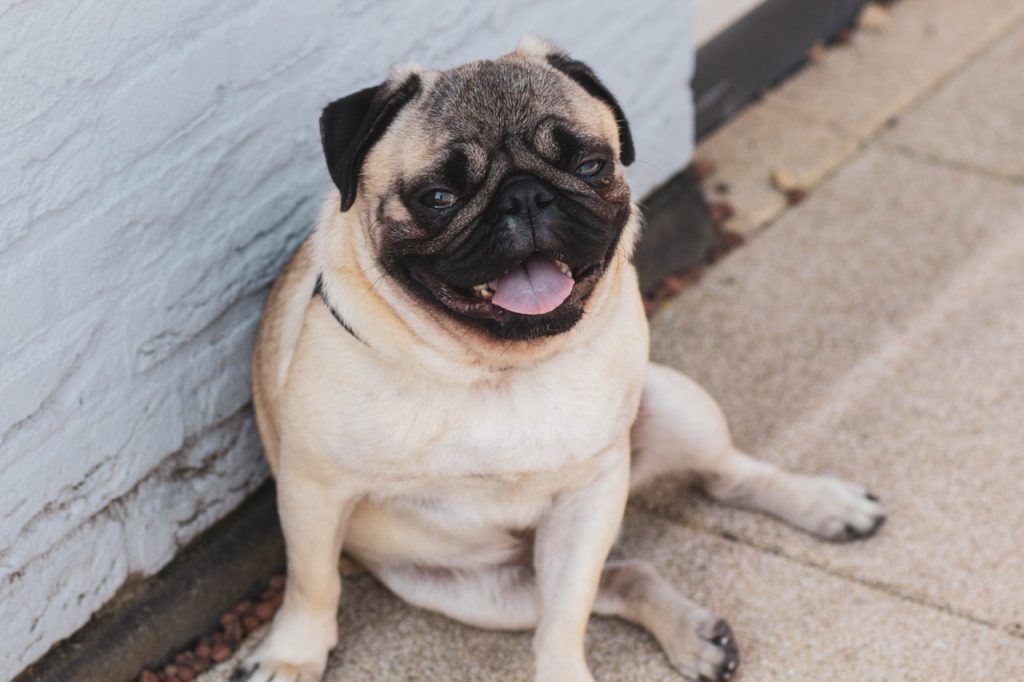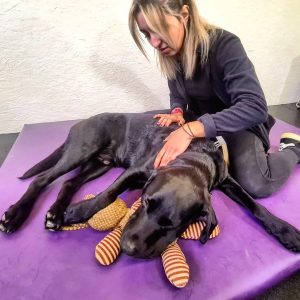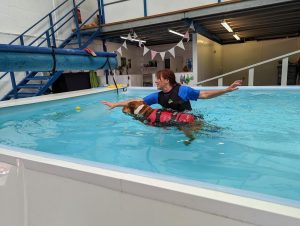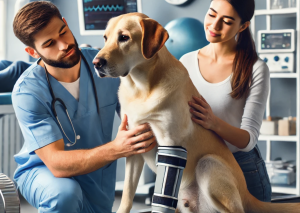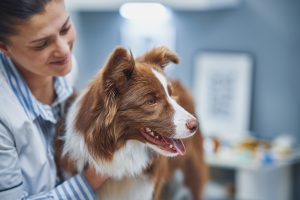So, you’re hitting the gym, cutting the carbs and starting your journey to become the new you – well it is January after all! But what about your dog, have they over indulged or maybe this horrible weather (we’re being battered by Storm Brendan as I write this) is making those walks a little shorter than they normally would be?
It’s thought that around 55% of dogs are overweight. With this in mind, there are likely to be over 60,000 overweight dogs within the catchment area of the Canine Fitness Centre!
Even though we know that 55% of dogs are overweight, 93% of dog owners think their dog is a healthy weight. And even though 93% of dog owners think their dog is a healthy weight, 43% of dog owners actually admit that they don’t know what a normal weight dog looks like. We can’t help are dog lose weight if we don’t know they need to lose it.
In this blog we hope to help you identify healthy dog weights and how to help it get there.
We are all aware of the health problems that being overweight can lead to in humans, and it is the same for dogs! Just to name a few conditions:
- Osteoarthritis
- Cardiovascular Disease
- Diabetes
- Mobility Issues
- Cancers
But surely just knowing that your dog has a heightened risk of just these few examples should make you want to do something about it, let alone the myriad of other problems it can lead to. Obesity is actually a disease in itself, which can cause your dog to feel very unwell both physically and mentally without all the ‘side effects’ that come with it.
Vets believe that the root causes of weight gain in dogs are due to:
- Not following feeding guidelines (at least 68%)
- Treating with leftover food (at least 78%)
- Insufficient exercise (at least 44%)
Your Healthy Dog Shape Guide
Weight is no longer considered an accurate measure. Vets are recommended to follow the Body Condition Score scheme.
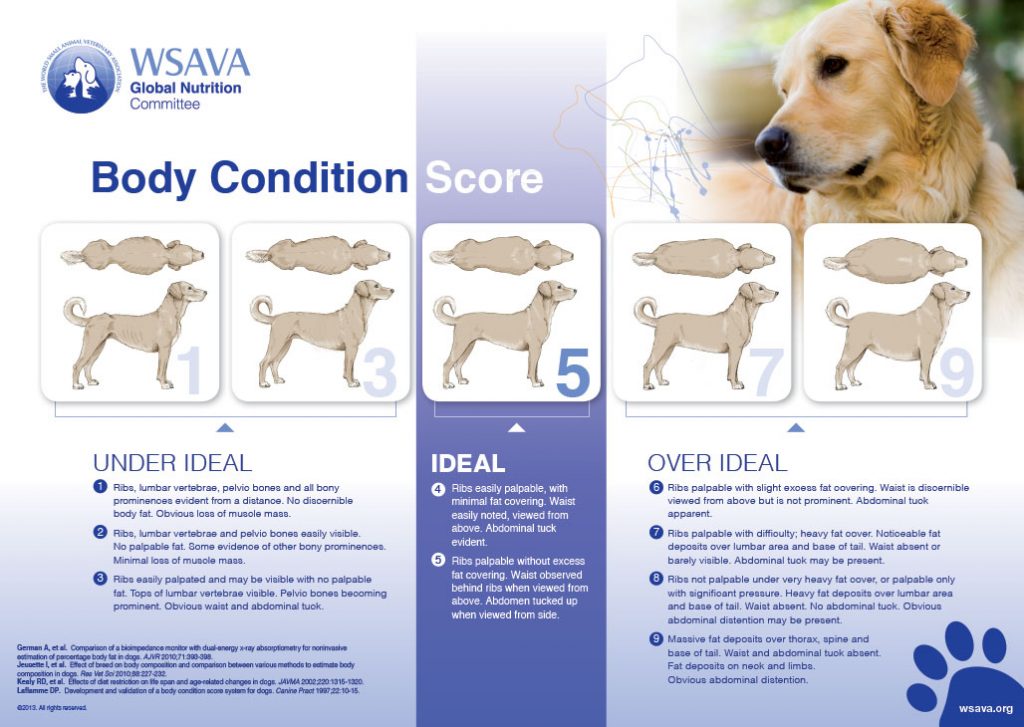
9 ways to reduce your dog’s weight
Don’t get sucked in
When your dog gives you those puppy eyes asking in their very best Oliver Twist acting voice ‘can I have some more?‘ don’t give in. If they give you hungry looks regularly start splitting up their food allowance throughout the day.
Treat differently
If your dog is in training, or maybe even in rehabilitation and needs treats for motivation then you can give them something different to kibble such as low calorie treats including carrots or broccoli.
Reward the good
If your dog vocalises for food the best thing to do is ignore it, it will eventually stop. When it stops, even if it’s a pause, give them a low calorie treat during the pause to reward the good behaviour.
Let’s get physical
I know it’s cold and dark outside but you’re going to have to step up the physical activity to burn those extra calories. We’ve outlined a couple of options to help you out below.
Stop the stealing
If you’ve got a dog on a diet and a dog or cat that’s not then you really need to feed them separately. Slamming down a pizza in front of your dieting spouse is grounds for divorce. The same goes for dogs and diets.
Change the diet
Some dogs just don’t like the food you give them. There are a variety of diet foods on the market so you may have to offer a variety until you find one your dog likes.
Off the plateau
The weight loss plateau happens in all weight loss programs. The body needs time to adjust. With a little time and a few adjustments to the diet and exercise program, the weight loss will resume. This is a time when patience is needed.
And breathe…
Your dog doesn’t like the food. You spend more of the little time you have walking your dog. Your dog seems miserable. You have had enough and just want to give in! Consider joining an online support group where you can vent your frustrations and get support from other dog owners.
Stop overfeeding
A 30lb dog only needs 480 calories per day. That’s one 6oz steak per day. But if your 30lb dog is overweight, let’s say by 7lbs, then they should only eat about 400 calories per day, which is about a 5oz piece of steak. Keep in mind it actually gets harder to grasp how few calories your dog needs the smaller your dog is.
Weight Loss Dietary Advice
We can’t formally give you nutritional guidance for your dog. That’s a vets responsibility. However here’s a couple of things you may wish to consider and explore:
Specialist Diets
There are specialist weight loss diets. These special diets are usually low-fat, high-fibre diets that can promote weight loss better than simply feeding smaller amounts of high-fat foods.
Fat contains about twice as many calories as proteins or carbohydrates; good diet foods usually have a fat content of 5% to 12% (dry matter basis), along with at least 25% protein and an adequate level of vitamins, minerals, and fatty acids in the form of fish oil.
And the secret ingredient? Increased fibre (7% to 30%). Fibre stimulates chewing, slows the movement of food from the stomach, and stabilises the blood glucose level to reduce that hungry feeling.
Understand Diet Food
The directions, even on a diet food, may instruct you to give enough food to maintain your dog’s present weight.
Really it’s just a a legal thing – otherwise, the food can’t be advertised as being sufficient to keep the dog alive by regular feeding.
Diet foods should have another panel that tells you how much to feed to help your dog lose weight. Those are the directions you need to follow.
There are many excellent prescription weight-loss diets on the market, and there are also some non-prescription brands that are formulated for this purpose.
Hydrotherapy for weight loss
As we well know hydrotherapy is beneficial for many clinical conditions and injuries. One thing that often seems to be overlooked is that hydrotherapy is a great form of exercise that can help to considerably speed up the process of weight loss.
There are three primary reasons behind this:
- Hydrostatic pressure
- Buoyancy
- Water temperature
With the combination of these three reasons the cardiovascular system has to work harder to supply the body with oxygen, causing them to become physically fitter. Due to this they will then also be able to exercise more vigorously than they can on land, which will also help to speed up their weight loss.
Not only will they be losing weight but they will also be gaining muscle, due to the resistance and viscosity of water causing their muscles to work harder to move their limbs forwards and backwards. This extra muscle supports the joints and therefore can help to slow the effects and symptoms of conditions such as arthritis.
On top of all this, most dogs love water, toys and playing! Not only are they getting the exercise they need, but it’s extremely mentally stimulating. We even see this in the elderly dogs that have now begun to “slow down”, after a few swimming sessions (and some immediately after their first) owners report that their dogs are much happier in themselves at home, much livelier and that they have got their spark back!
Great, I’ll get down to the beach then…
… hold up there cheeky chops! Before you rush off to grab an ice cream and chuck your dog in with the sharks you need to know that this really isn’t a good idea at all.
Water temperature plays a massive part in the role of hydrotherapy – in the sea, river or lake your dogs muscles will tense up risking injury and stiffness after exercise.
Hydrotherapists are fully qualified meaning they know how to exercise your dog properly and spot the signs if they become too tired.
Fat dogs cheat. No really, we see this all the time, they use their extra fat as buoyancy to just float and not exercise. Our therapists will catch and cheaters and like a personal trainer work all of their legs to maximise the benefits.
Ready to get started with hydrotherapy? Time to give us a call on 02392 16 22 23 or drop us an email on enquiries@thecaninefitnesscentre.co.uk to register your dog.

